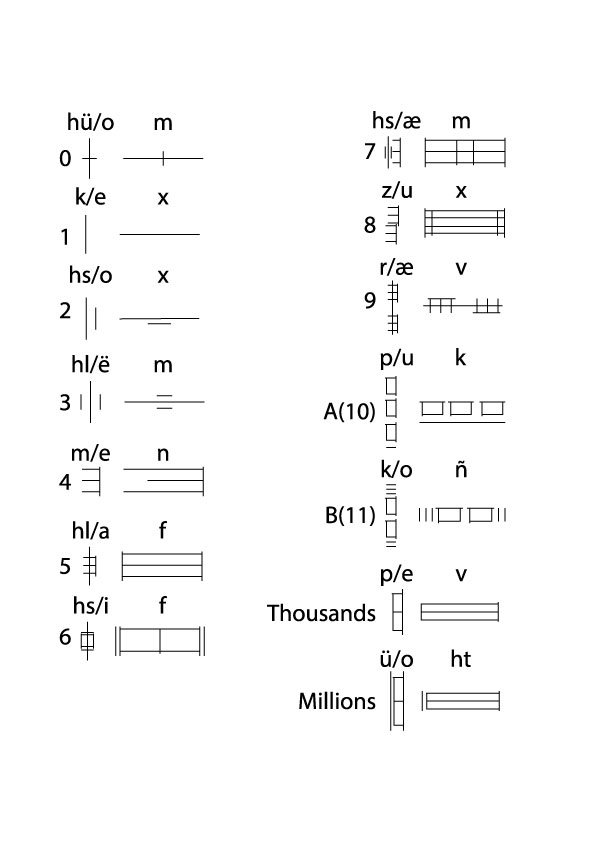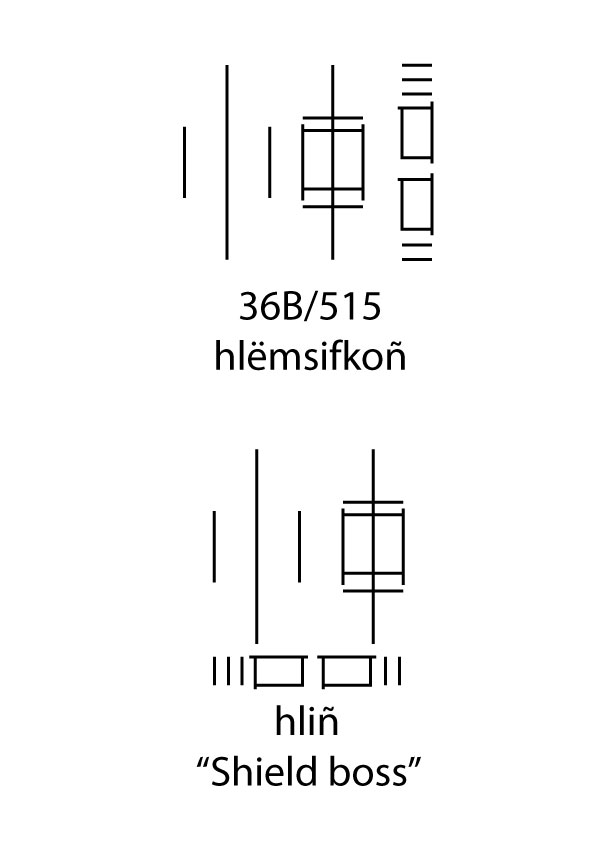Orthography and Numerals
Keywords: orthography, numerals
The native orthography for Kanhlengo is a Hangul-style alphabet. Syllables are written from left-to-right, with the letter for each coda placed beneath the letters for the onset and nucleus of its syllable. Each phoneme is represented by a unique letter, but each letter shape may change depending on location. The strokes used to represent a letter are boxy with right or acute angles. There are no curved strokes, dots, or circles.
Orthography: Intro
Basis, History and Function
The first things the Kanhlengi developed to write were their numbers. Their writing system was then based on how their numbers look. Why this is, is because they are very concerned with special holidays, praying days and birthdays. Each numeral represents three letters of the Kanhlego alphabet in addition to the numeral names themselves. Each number has two glyphs, the upright glyph is for the onset, nucleus and for the number itself while the lying glyph is for the coda. The upright glyph can work as the stand-alone number by writing the glyphs in a sequence instead of a syllable stack.
The glyphs work as letters when they are stacked in syllables but as numbers when they are written in a sequence. The letters when they are the onset they represent the onset of the name of the number (e.g. 4 "men"; onset /m/), the letters as the nucleus is always a vowel and represent the nucleus of the number (e.g. 4 "men"; nucleus /e/) and the letter as the coda is always the coda of the number (e.g. "men"; coda /n/).
Numbers:
0 hüom
1 kex
2 hsox
3 hlëm
4 men
5 hlaf
6 hsif
7 hsæm
8 zux
9 ræv
A [10] puk
B [11] koñ
'Thousands' - pev
'Millions' - üoht
Here are the associated figures for the number-based characters from Move 91 (Sammy En):

